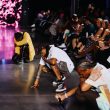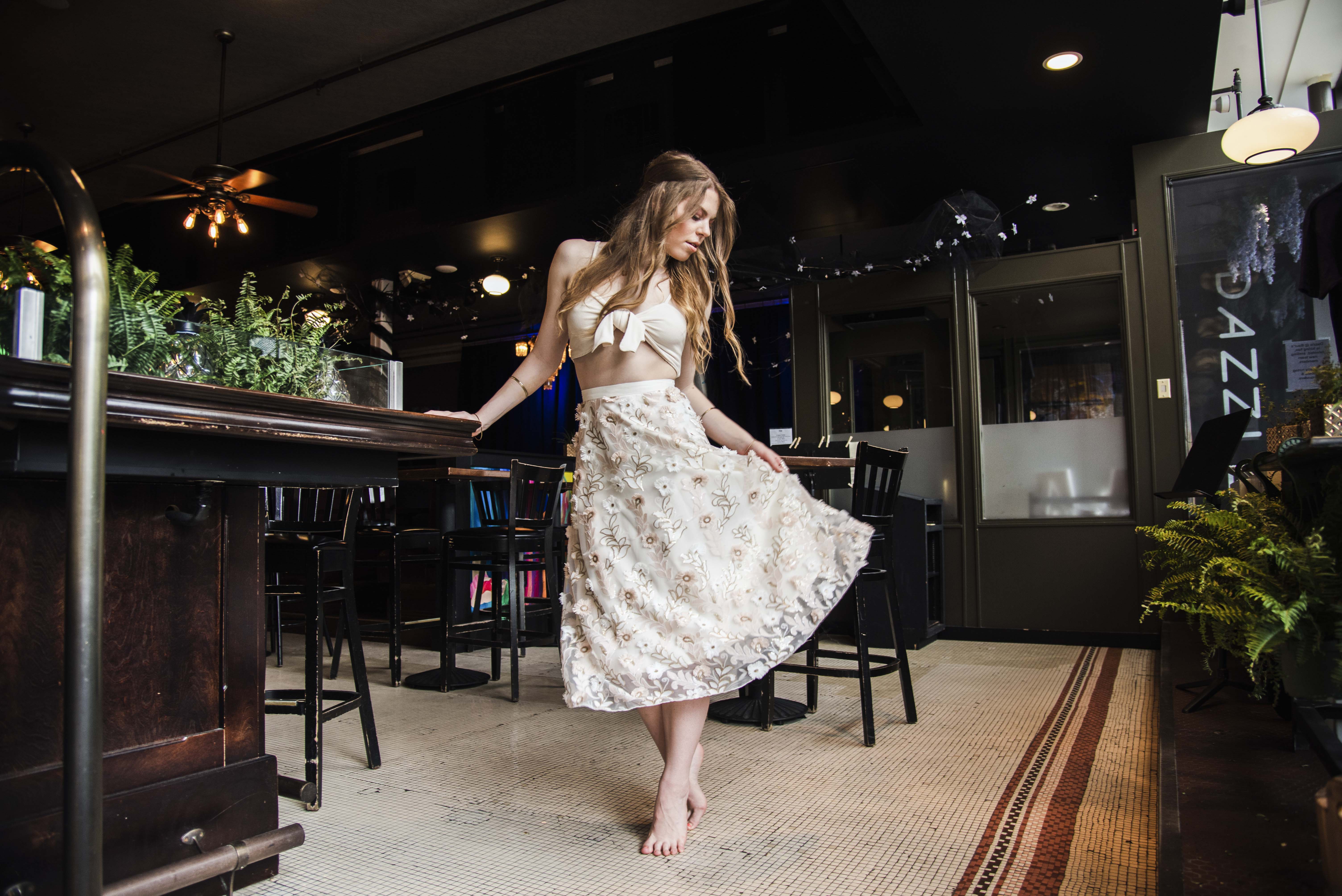The influence of music on fashion, and of fashion on music, is a relationship that marries two of the most independent elements in entertainment. For decades, musicians like Freddie Mercury, Kurt Cobain and Kanye West have all had a major influence on the latest fashion trends. The bluegrass, indie-pop, R&B genres and beyond have encouraged unique styles that entertainers and fans alike evolve over time, creating subcultures and ultimately moving pieces of art.
Denver musician Zombgora Lilith — vocalist of deathcore groups Nefarious Heart, The Undertakers and Devocifer — was a young goth. Her parents listened to metal music, and she was influenced by the likes of Slayer, Ozzy Osbourne and Joan Jett. Around age 11, she started to dress the part. Zombgora became fascinated with the Victorian-era “old-school vampire look,” and the culture behind the music she worshipped — music that was gruesome, honest and encouraged expression. “I didn’t want to be the same as everybody else in society,” Zombgora said. “I wanted to make a statement.”
The zombie-like face paint and black fishnets that stylize the metal genre are only one example of music and fashion’s overlap. To get a taste for a few of these unique fashion trends, we asked some local musicians to model their style and share their stories on how they cultivate their look and stay true to their sound.

Hip-Hop and R&B
Hip-hop and R&B’s powerful influence on the world of fashion dates back to the 1970s, according to an article published in the Cornell Chronicle. The style was born from a culture of mostly African American and Latino youth and was associated with rap music, DJs and breakdancing. Tracksuits, oversized t-shirts, bucket hats, jewelry and bright prints are some of the pieces that have made the style iconic, seen on famous musicians and everyone else who wanted to emulate the look. This influence on style represents what the Cornell article refers to as “trickle-up theory,” in which trends originate from the lower classes that develop a distinct subculture that the elite — musicians — pick up on. R&B and hip-hop fashion is also known for its experimentation with shapes, fits and silhouettes of different clothing. The reach of hip-hop music into style continues to evolve and influence beyond the fashion industry.
Adiel Mitchell
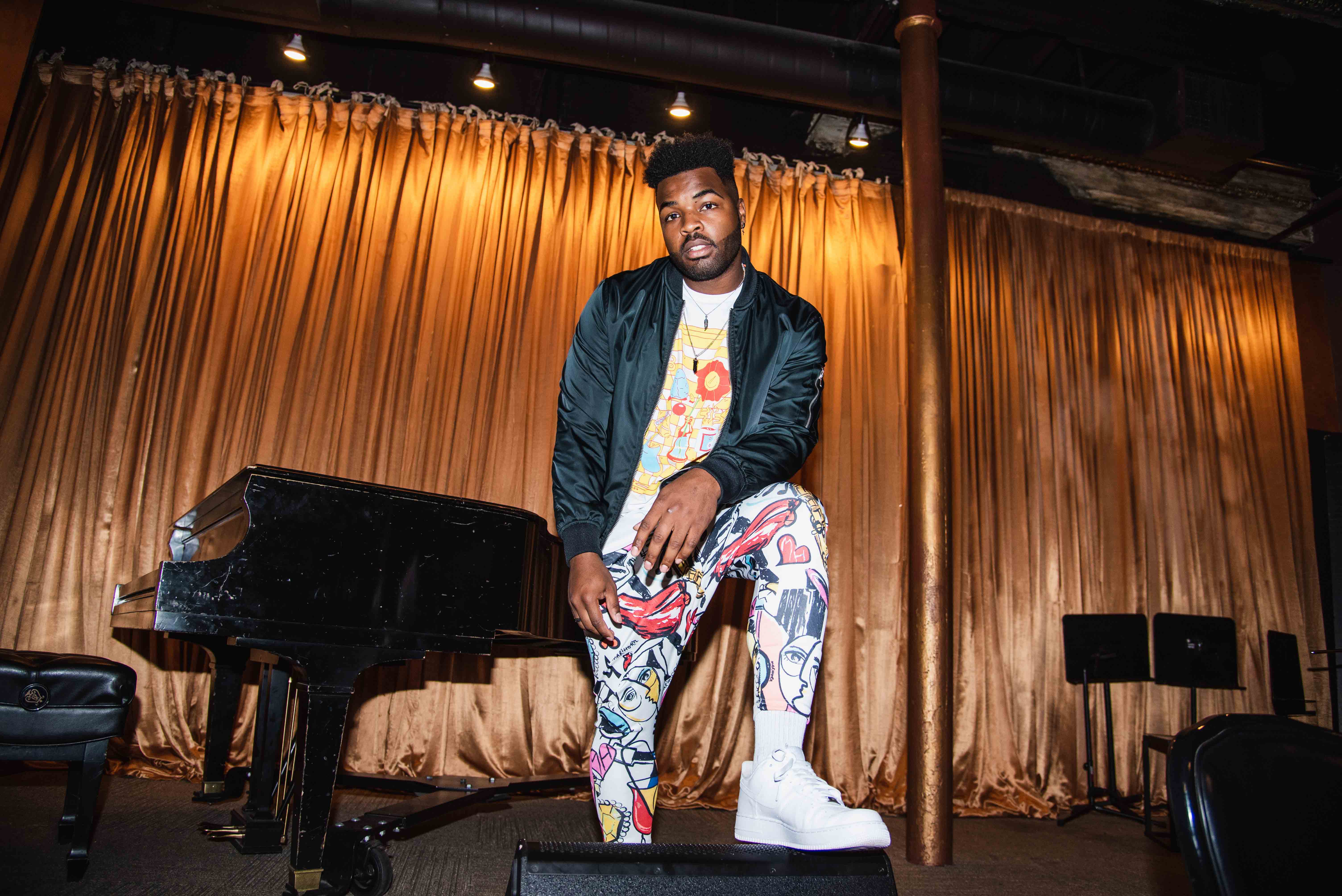
For local hip-hop/pop artist Adiel Mitchell, a sense of fashion developed only when his music did. “I did not know what I was doing for a minute,” Mitchell said. “I was wearing fedoras — I was awkward. I’m not gonna lie.” Now performing regularly, he sees his style as a way to relate his emotions to his audience and “create a mood or atmosphere.”
“The music that I make is very carefree. I’m just having fun, I want that message to be felt: ‘This guy enjoys what he does,'” said Mitchell.
Kayla Rae
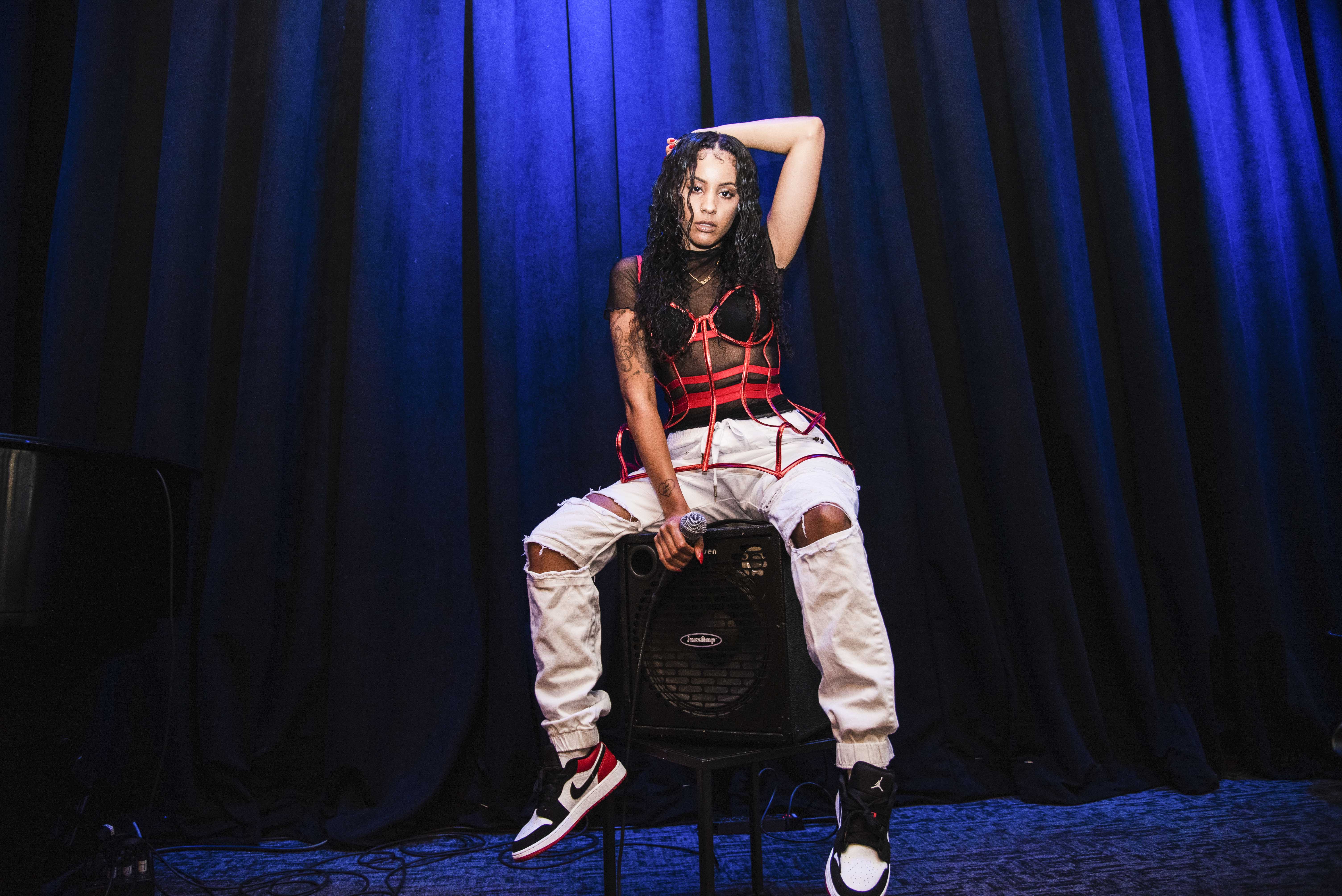
“When I think of R&B, I think of the ‘90s,” Denver’s R&B star, Kayla Rae, said. Her vision of R&B style? “Comfy but cute.” In the ‘90s, she said, the women were “still cute in heavy-ass clothes. When I’m on stage I like to be comfortable. To me, being sexy is being cozy.” Becoming an entertainer has forced Rae to take more risk in fashion, and that’s something she’s OK with.
“I think fashion is the perfect way to express yourself and step out of your comfort zone a little bit,” said Rae.
Punk Rock
Forward-thinking pioneers like Vivienne Westwood and Malcolm McLaren are known for their experimental punk fashion. Both designers drew heavy inspiration from iconic punk bands of the movement such as The Sex Pistols and The Clash, leading to their experiments with “aggressive” rocker fashion — metal studs, zips, chicken bones, etc. University of Colorado Denver professor Maria Buszek wrote in the book Design History Beyond the Canon that punk rock was originally recognized as a “look” rather than a “sound,” and evolved because “fashion was the first way in which punk culture expressed itself, its participants found one another, and perhaps the one subject on which women were looked to as authorities at punk’s start.” Punk fashion is also unisex. This style encourages “exploring androgyny or new gender expression,” Buszek said.
To be punk is to rebel, and every metal stud, leather jacket and ripped sleeve of its fashion has contributed to the culture of “sticking it to the man” — changing as our definition of what “sticking it” may be. Punk is the anti-pop, and has stirred the tide for the enormous wave in fashion that is goth culture. It would be inappropriate to divide punk fashion by gender given its heavy influence by the queer and transgender communities of the 1970s. The original “glam rock” style has opened doors for every artist and stylist willing to change the narrative.
Lela Roy

If there’s one thing that’s true of punk, it is that it’s there to push the envelope. One minute in a room with Oxeye Daisy frontwoman, Lela Roy, and you’ll see that she’s got punk attitude and style to spare. “A lot of my style is derived from punk and post-punk music,” Roy said. Think ’80s, she said, like The Clash and The Cure. There is, apparently, nothing more punk than bringing celery to a photo shoot, but Roy wouldn’t share the bright green inside joke. “That’s some Oxeye deep cuts,” Roy said. “I don’t know if the world is ready to hear about the celery quite yet.”
“The roots of punk, it’s about rebelling. There’s something punk about rebelling against punk, you know?” said Roy.

Dream/Indie Pop
Modern dream pop fashion is as textured as its sound. The fashion — born from the similar indie pop genre — combines the formal hairstyles and accessories of earlier decades (i.e. ’60s), with the trendiness of newer fashions, like that of hip-hop. As writer Kyle Ursin wrote in W Magazine when describing indie pop musician Lana Del Rey, “Much like her music, her style is both retro-chic and forward-thinking.”
Dream pop is a subculture of indie pop, which is most popularly represented by large-framed “hipster” glasses, solid-colored suits or botton-ups for men, and timeless pieces for women, such as long floral-printed skirts. Dream pop fashion takes a colorful spin on indie culture, often incorporating the bold colors and creativity of hip-hop, or dressing it up with soft, feminine styles. Although dream pop is a newer genre with less fashion history to boast, its trendiness and current effect on our wardrobe will leave its mark on styles to come in a subtle yet influential way.
PHIE
PHIE — the voice and leader of her dream pop group — relates her style choices to the drama of her music. “When I wear something, I want it to feel cinematic,” PHIE said. “I want people to feel dream-like, like they’re being transported to the vulnerability of the music.” PHIE — feeding off the sound of her music when deciding how to style herself on stage — keeps that visual interpretation of music during the writing process.
“Usually when I write my music, I think of the music video first,” said PHIE.
Death Metal
Goth fashion draws on ambiguity, mystery and gore while straying from the mainstream. Hard to define but easy to identify, goth fashion is characterized by black clothing, corsets, face paint, metal chains, tattoos and the like. Metal style is aggressive punk. Like punk culture and fashion, fans sometimes find the hardcore music associated with goth culture second to its style. In recent years, designers like Rodarte have conceptualized collections inspired by the darkness of gothic fashion. Yet despite the gloomy connotations gothic fashion has acquired, the main message is a divergence from mainstream culture. With a quote from her essay in the Illinois News Bureau, stage manager Rebecca Schraffenberger summed up goth culture: “It’s one of our many ironies that we externalize the world’s destructiveness stylistically, without resort to actual violence.”
Zombgora Lilith and Boo the Ghost

Every day is Halloween for Boo the Ghost and Zombgora Lilith, leaders in metal/horrorcore band The Undertakers. Zombgora and Boo have additional bands, too, including Nefarious Heart and Devocifer for Zombgora and Boo’s solo act. To them, goth culture is more than an aesthetic — it’s an extension of self-acceptance. “We grew up living a hard life and we want people to know, you’re not alone,” Boo said. “It’s OK to be yourself, express yourself. Feel our pain.”
“We look like this on the outside, but we’re good people.” said Zombgora.
Bluegrass
Bluegrass fashion pulls from the old-school Americana style that influenced not only a wardrobe but an entire folk lifestyle. Denver and its neighboring cities have been heavily influenced by bluegrass music and its association with music festivals, a preference for all things natural and a generally laid-back attire.
In bluegrass style, there is a focus on color, pattern and a desire to be connected with nature. Given these preferences and a fan base that promotes a sense of community and love for all, bluegrass or folk culture is similar to the also trendy and Denver-centric electronic music culture, although they differ completely musically. Pieces that define bluegrass style include everything in between a proper suit and flamenco hat — as seen on folk father Bob Dylan — and the flowing, loose-fitted patterned pants and vests many festival-goers opt for.
MJ Ouimette
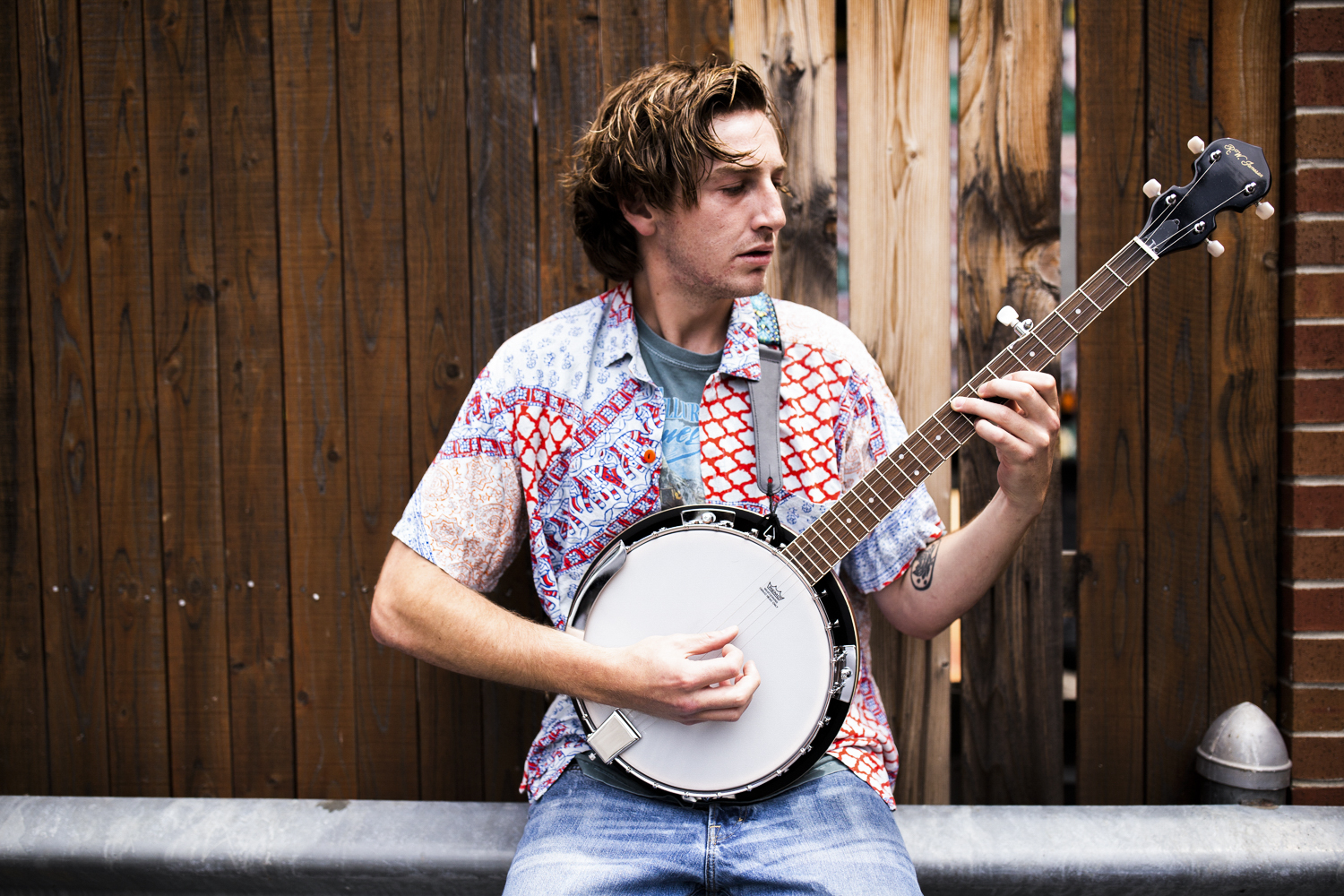
Tenth Mountain Division guitarist, MJ Ouimette, may be laid back, but he knows when to walk the walk. Ouimette said his style varies from show to show — and in typical folk fashion — includes everything in between what he “waltzed off the river in” to a nice suit. Ouimette was influenced by Leftover Salmon’s Vince Herman, who he describes as “hilarious, improvisational and a great human being.” As for his audience’s style expectations?
“I’m just happy when I see anyone wearing our merchandise,” said Ouimette.
Mark Morris
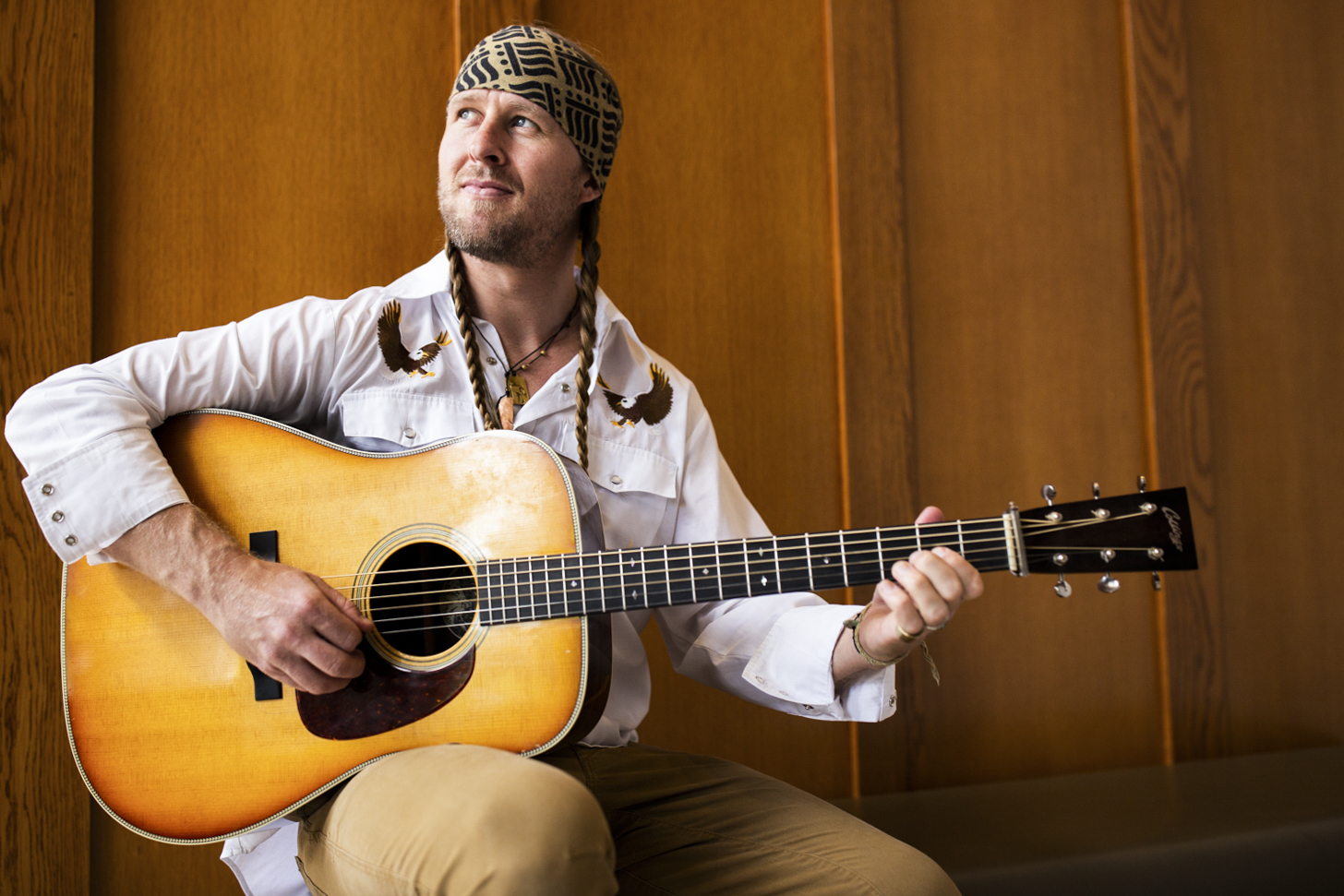
Although Rapidgrass is defined by most as a bluegrass group, frontman Mark Morris’ style is more country, a genre that’s been a big influencer of bluegrass. Morris looks up to Willie Nelson and has unintentionally emulated his style. “I try to sing just like Willie,” Morris said.
“Music has continually changed my life and has defined my lifestyle,” said Morris.
Electronic Dance Music (EDM)
EDM has a deeply-rooted connection to fashion that includes elements such as sequins, glitter, metallics, bold prints, mesh, vivid colors and many other features unique to the culture. This genre encourages individualism by accepting and praising anomalous outfits worn at EDM events. EDM aims to transport listeners to a fantasy world, taking festival fashion along with it. Rave attendees covet the “otherworldly” dimension EDM creates and they showcase their love for deep bass and funky beats by expressing themselves through style.
Menswear typically focuses on functionality and movement — cargo shorts, harem pants, joggers, tank tops, button-ups, bandanas and festival scarves are popular for EDM events. For women, the variability is much greater. Women’s festival fashion focuses on over-the-top, exaggerated costumes, or, on the contrary, barely-anything-there fashion. Crop tops, booty shorts, pasties, fishnets and a great emphasis on hair and makeup categorize the fashion. Whether one is adorned in beads, showered in glitter or cloaked in a festival scarf wrap, the recognizable and distinct nature of EDM style is indisputable.
Tyler LaFortune

DJ Tyler LaFortune was influenced by electronic music at Electric Forest — a music festival he described as being one of the best experiences of his life. It was by similar influence that LaFortune developed his sense of style — his pashmina scarf, to name one.
“I got influenced over the years by going to music festivals … that culture of things,” said LaFortune.
The interdependence of fashion and music is an experience that will continue to evolve as our cultures do. External and internal factors play a role in influencing the result of this concept. In an interview with CU Denver professor Buszek, she noted, “Music — like all of the arts — comes from a culture. That culture usually starts out fairly complete.” Sounds and looks are developed by influences within the culture and continue to evolve as musicians find their particular sense of self. “You have music that’s influenced by a class, a community, a concept,” Buszek said, “Whether that’s in words, sounds or clothing, it’s inevitably part of not only how that music sounds, but looks.”
Photography by Madison McMullen and Bridget Burnett.
Location provided by Dazzle Jazz in downtown Denver.
Female model (Skylur Bradeen) provided by Goldie Mae Productions.
Hair by Ysabel Blu.
Makeup by Baobai Vang.
Clothing provided by Common Threads Boulder, Gracie’s Boutique, Buffalo Exchange Boulder and Electric Bubblegum.
Styled by Sydney Scarola.

